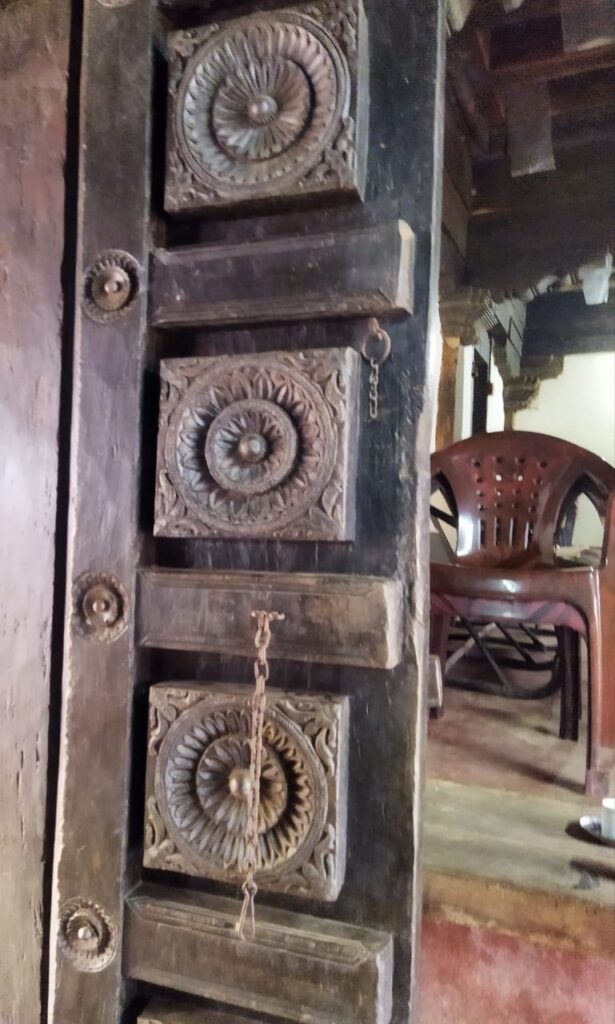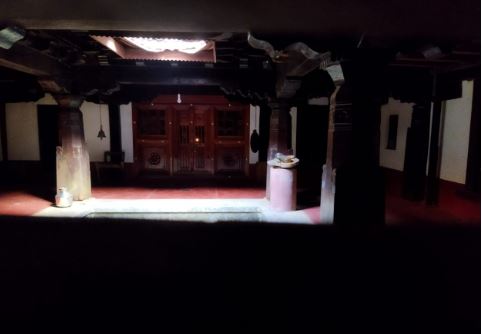PART – II
(KC Kalkura)
Bhojara Somayaji opted for a supervisory job in the Vegetarian Refreshment Room (VRR) of MSM (Madras and Southern Maratha, later Southern) Railways. He was quite popular among the subordinates as well as the superiors. After the death of his father, Shivarama Somayaji, Bhojaraja used to visit Sural twice every year and manage the family affairs. The third one Bhujanagaraya Sastry settled in Davanagere as the first professional Photographer and commercial artist of the City. He was the official photographer of both the Govt and the National Movement for three districts of Chitradurga, Shivamogga and Chikmagalur in the princely state of Mysore. He was in demand when Gandhi and Nehru on the one hand and Diwans, Sir Mirza Ismail, and Ramaswamy Mudaliar visited the districts.
The last uncle, Sankara Somayaji chose to become a specialist cook cum sarak master in hotels and restaurants. He served in different parts of Mysore State and Telangana. He was the head cook in Welcome Hotel, Karimnagar in Telangana in the early 1950’s. When I visited that hotel in the 1980s and ’90’s the proprietor, Janaradhana Holla introduced me to some aged customers as the nephew of Sankara Master. In a typical Nizami style, they hugged me. They had all the praise for Sankara. “His preparations, whether it is Sambar or Jahngri, have not been equaled since then, either in taste or aroma or presentation.”

The ancestral house, built by my grandfather, and the landed property were mortgaged and was possessed by the family. It was redeemed by the original owners. Ramachandra Somayaji’s property was self-acquired. As he died issueless, his wife, Ramadeviamma sold the land and the house and settled with nephews. As such none of my maternal uncles’ family members reside in the village. To recapture my childhood memories, occasionally I visit the village, about 10k.ms from my ancestral village, Kuradi in Udupi Taluk. The present landlords receive me with affection ‘as the nephew of our Shanubhogue’ and offer tender coconut.

My mother had five younger sisters; Gouri, Radhe, Shringari, Saraswathi, and Padmakshi. Only Rahde, married to Krishna Hebbar of Malavalli Village in Yellapur Taluk, North Kanara Dist, Karnataka, had five sons and two daughters. All the four others married but died issueless.
Reverting to the Palace, it was built with Mud, Mortar, and Bricks. Dr.Rajendra Prasad said: “Our heritage shall not be counted, weighed, and measured in terms of the bricks and stones and mortars and the length and breadth and the height and width. The spiritual personality in them and the eternal messages they convey and the lessons they teach us forever shall be considered”. Though the rulers of Sural were Jains, the priests in the Mahalingeshwara Temple were Brahmins, and the Rituals were conducted according to Hindu traditions. It was the only Jain family in the village. They were related to the Dharmadhikari of Dharmasthala. I pursued the list of Inscriptions of the Vijayanagara period during the reigns of Praudha Devraya and Sri Krishnadevaraya. (Kannada University, Hampi Publications) I could not find one at Sural. However, there are many around, within a radius of 15 km like Neelavara, Kuradi, Barkur, Perdoor, and Matpadi. None of them, totally about 100 seems to refer to Sural. The nearest one is at Kokkarne, 4 km away from the Palace. It is dated Monday, Feb.28, 1442. AD. It speaks of the donation of one Govinds Shetty to the God Sankaranarayana. One Thimmanaraya Odeyar was the Chief Minister of Barkur. There may be some belonging to some other period.
Shooting of Madhvacharya (1986), a Kannada Language feature film directed by G.V.Iyer took place in the Sural Palace. The film is based on the life and teachings of the founder of the Dwaithavada philosophy, Madhvacharya. Ananthalakshmi Films produced this film and the theatrical distributor was the distributor of the film. This film was screened at the 11th IFFI panorama. It won the National Award for Dr M Balamuralikrishna as the Best Music Director.

What is more important is the durability of the building. If even after five hundred years it is in a habitable condition, it speaks of volumes of the technological and engineering marvel. All the materials used in the construction appear to be biodegradable. Now we dig the material from the earth and convert them into non-degradable objects. It is modernity; ‘Development’. There are thousands of such structures all over the country. It is worth exploring the possibility of reviving the knowledge of Sural Palace and preserving them for posterity. It may be costly. All public buildings are constructed for posterity. Now the skyscrapers, roads, bridges, and dams, Reinforced Concrete Constructions (RCC) need repair, even before they are completed. Should we go to Japan, Singapore, China, and the US to purchase or borrow or hire technology? Are they ‘Making in India’?
Salute those wise men who have undertaken the restoration work to preserve the Centuries-old Sural Palace to “gleam anew.” Generations to come shall emulate the Tholahars and Karnams. (concluded)
I am H Pattabhirama Somayaji, Professor of English Mangalore University (last son of Shankara Somayaji whose name figures in the above article). I should thank KC Kalkura, my brother in law, not only for his nostalgia (which all of us are prone to), but also for his faithfulness to facts (which is not too common). Let me add that the school is still doing well despite poor funds & manpower, the annual festivities are taken care of by the public in general. Any help to the school (1st to 7th standard), with only one regular teacher (Headmistress called Sharada) would be appreciated. I profusely thank KC Kalkura & TeluguNews for the publication.